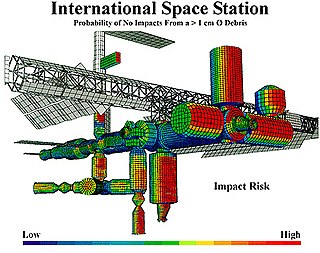Related Research Articles
Project management is the process of leading the work of a team to achieve all project goals within the given constraints. This information is usually described in project documentation, created at the beginning of the development process. The primary constraints are scope, time, and budget. The secondary challenge is to optimize the allocation of necessary inputs and apply them to meet pre-defined objectives.

Risk management is the identification, evaluation, and prioritization of risks followed by coordinated and economical application of resources to minimize, monitor, and control the probability or impact of unfortunate events or to maximize the realization of opportunities.

Fujitsu Limited is a Japanese multinational information and communications technology equipment and services corporation, established in 1935 and headquartered in Tokyo. It is the world's sixth-largest IT services provider by annual revenue, and the largest in Japan, in 2021. The hardware offerings from Fujitsu are mainly of personal and enterprise computing products, including x86, SPARC and mainframe compatible server products, although the corporation and its subsidiaries also offer a diversity of products and services in the areas of data storage, telecommunications, advanced microelectronics, and air conditioning. It has approximately 126,400 employees and its products and services are available in approximately 180 countries.
The rational unified process (RUP) is an iterative software development process framework created by the Rational Software Corporation, a division of IBM since 2003. RUP is not a single concrete prescriptive process, but rather an adaptable process framework, intended to be tailored by the development organizations and software project teams that will select the elements of the process that are appropriate for their needs. RUP is a specific implementation of the Unified Process.
The following outline is provided as an overview of and topical guide to software engineering:
In software development, agile practices include requirements discovery and solutions improvement through the collaborative effort of self-organizing and cross-functional teams with their customer(s)/end user(s), Popularized in the 2001 Manifesto for Agile Software Development, these values and principles were derived from and underpin a broad range of software development frameworks, including Scrum and Kanban.
Enterprise architecture (EA) is a business function concerned with the structures and behaviours of a business, especially business roles and processes that create and use business data. The international definition according to the Federation of Enterprise Architecture Professional Organizations is "a well-defined practice for conducting enterprise analysis, design, planning, and implementation, using a comprehensive approach at all times, for the successful development and execution of strategy. Enterprise architecture applies architecture principles and practices to guide organizations through the business, information, process, and technology changes necessary to execute their strategies. These practices utilize the various aspects of an enterprise to identify, motivate, and achieve these changes."
Enterprise content management (ECM) extends the concept of content management by adding a timeline for each content item and, possibly, enforcing processes for its creation, approval, and distribution. Systems using ECM generally provide a secure repository for managed items, analog or digital. They also include one methods for importing content to bring manage new items, and several presentation methods to make items available for use. Although ECM content may be protected by digital rights management (DRM), it is not required. ECM is distinguished from general content management by its cognizance of the processes and procedures of the enterprise for which it is created.
A federal enterprise architecture framework (FEAF) is the U.S. reference enterprise architecture of a federal government. It provides a common approach for the integration of strategic, business and technology management as part of organization design and performance improvement.
Technology strategy is the overall plan which consists of objectives, principles and tactics relating to use of technologies within a particular organization. Such strategies primarily focus on the technologies themselves and in some cases the people who directly manage those technologies. The strategy can be implied from the organization's behaviors towards technology decisions, and may be written down in a document. The strategy includes the formal vision that guide the acquisition, allocation, and management of IT resources so it can help fulfill the organizational objectives.
A software factory is a structured collection of related software assets that aids in producing computer software applications or software components according to specific, externally defined end-user requirements through an assembly process. A software factory applies manufacturing techniques and principles to software development to mimic the benefits of traditional manufacturing. Software factories are generally involved with outsourced software creation.
The British Ministry of Defence Architecture Framework (MODAF) was an architecture framework which defined a standardised way of conducting enterprise architecture, originally developed by the UK Ministry of Defence. It has since been replaced with the NATO Architecture Framework.

An enterprise architecture framework defines how to create and use an enterprise architecture. An architecture framework provides principles and practices for creating and using the architecture description of a system. It structures architects' thinking by dividing the architecture description into domains, layers, or views, and offers models - typically matrices and diagrams - for documenting each view. This allows for making systemic design decisions on all the components of the system and making long-term decisions around new design requirements, sustainability, and support.
The following outline is provided as an overview of and topical guide to business management:

In the business sector, business architecture is a discipline that "represents holistic, multidimensional business views of: capabilities, end‐to‐end value delivery, information, and organizational structure; and the relationships among these business views and strategies, products, policies, initiatives, and stakeholders."
Logical Domains is the server virtualization and partitioning technology for SPARC V9 processors. It was first released by Sun Microsystems in April 2007. After the Oracle acquisition of Sun in January 2010, the product has been re-branded as Oracle VM Server for SPARC from version 2.0 onwards.
A glossary of terms relating to project management and consulting.
Lean IT is the extension of lean manufacturing and lean services principles to the development and management of information technology (IT) products and services. Its central concern, applied in the context of IT, is the elimination of waste, where waste is work that adds no value to a product or service.
Business process management (BPM) is the discipline in which people use various methods to discover, model, analyze, measure, improve, optimize, and automate business processes. Any combination of methods used to manage a company's business processes is BPM. Processes can be structured and repeatable or unstructured and variable. Though not required, enabling technologies are often used with BPM.
Capability management is the approach to the management of an organization, typically a business organization or firm, based on the "theory of the firm" as a collection of capabilities that may be exercised to earn revenues in the marketplace and compete with other firms in the industry. Capability management seeks to manage the stock of capabilities within the firm to ensure its position in the industry and its ongoing profitability and survival.
References
- ↑ Macroscope Overview [ permanent dead link ], Fujitsu.
- ↑ Macroscope presentation, Fujitsu.
- ↑ Information System Development Guide Part 1 Managing the Project, DMR AND ASSOCIATES LTD, 1986, ISBN 2-9800387-3-3
- ↑ Information System Development Guide Part 2 Developing the System, DUCROS, MEILLEUR, ROY AND ASSOCIATES LTD, 1984, ISBN 2-9800387-0-9
- ↑ Tardieu H., Nanci D. & Pascot D., Conception d'un système d'information - construction de la base de données, Editions d'organisation, Paris, 1979
- ↑ Chris Gane & Trish Sarson, Structured System Analysis: tools and techniques, Improved System Technologies, New York, 1979
- ↑ DMR's Macroscope: A powerful Mix, Gartner Research Note P-400-156, August 29, 1996
- ↑ Macroscope description on Macroscope User Group site
